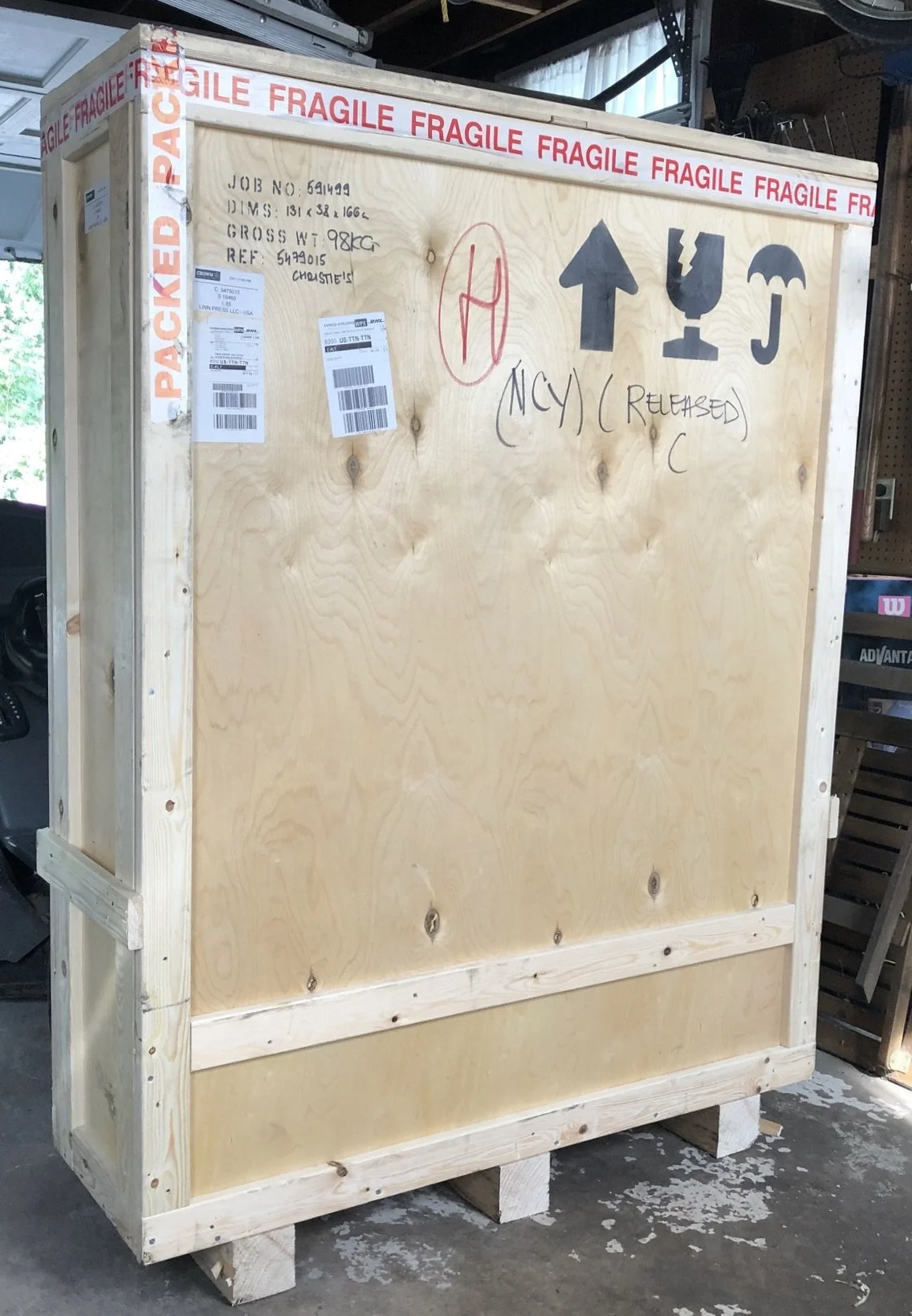auctions and digital platforms
Auctions
Jacob Kassay. Untitled, acrylic and silver deposit on canvas, 2010.
In a sense, auctions may be the most accessible and transparent buying-and-selling channel in the art market. But there are many caveats.
On the buying side, auctions appear to be democratic insofar as anyone can make a purchase as long as their financial wherewithal comports with acquisition costs, including commissions. There are many moving parts.
On the selling side, auctions—irrespective of type, brand, or scale—are largely (and increasingly) risk averse. Essentially, they consign works from sellers on the basis of risk (i.e., the probability of sale) and net profit. It appears simple.
But auctions are a tough business. They are under increasing financial and competitive pressures, modifying business practices, like dramatically modifying commission structures.
Auctions typically upload their sales catalogs online, a week or two in advance of a sale. With increasing frequency you can watch an auction in real time without registration or obligation. At an auction’s conclusion, individual and total results are posted free of charge.
The history of auctions is well documented, originating as purveyors of just about anything beginning in the 1700s. Specialization evolved gradually, and expansion into the US market began in 1964. Three auction houses dominate the modern and contemporary art markets.
Jacob Kassay, Untitled, 2010, transportation from London to Princeton, NJ.
Auctions are a cluttered market, Five (or six) Asian auctioneers have joined the ranks of the top 10. Bonham’s and Heritage are multi-branched, international businesses. In the States, since 2019 Rago merged with Wright, which merged with LA Modern Auctions, which further merged with others to create an alliance of regional auctioneers tapping regional markets. Freeman's | Hindman likewise merged in 2023. Virtually all bricks-and-mortar auctioneers maintain premises but do a disproportionate amount of business online and via apps.
The thing is, conventional and highly reputable auction houses exist in dozens of regional domestic and international markets. The breadth and depth of quality is substantial. linn press invariably looks at diverse auctions in diverse places. It strengthens our expertise and network. Here are some suggestions:
Austria
Dorotheum (art, jewelry, motor vehicle, and watches).
Germany
Lempertz (modern and contemporary art, jewelry, tribal and ethnographic materials, and watches).
Vam Ham (diverse genre with an European orientation).
Kunstauktionshaus Zemanek-Münster« (tribal arts).
Hong Kong
Poly Auction (diverse genre with an strong Asian orientation; its modern and contemporary auctions are instructive.)
Sweden
Bukowskis (diverse genre with an European orientation)
Digital platforms
We do not encourage participation in online art commerce for risk-averse or inexperienced buyers. From individual Facebook and Instagram accounts to eBay, Amazon, and other sales platforms, online and social media are are not ideal purveyors. Digital media are places to look and learn.
Nonetheless, numerous art publications and museums—European ones, especially—offer quarterly or annual artists’ editions (Jahresgaben)—for online purchase.
Buyer, be aware
terms and conditions
Legally, in the United States, auction terms and conditions are defined and detailed in print and online catalogs and offers. This does not make them intelligible. Both buyer and seller fees and estimated expenses are explained, including commissions, extraneous charges, premiums, shipping and handling, taxes, and transportation. Many of these (and other) costs are incremental; invariably they are direct responsibility of the buyer or seller.
We strongly advise buyers to obtain condition reports and to verify provenance before bidding. This is non-negotiable.

